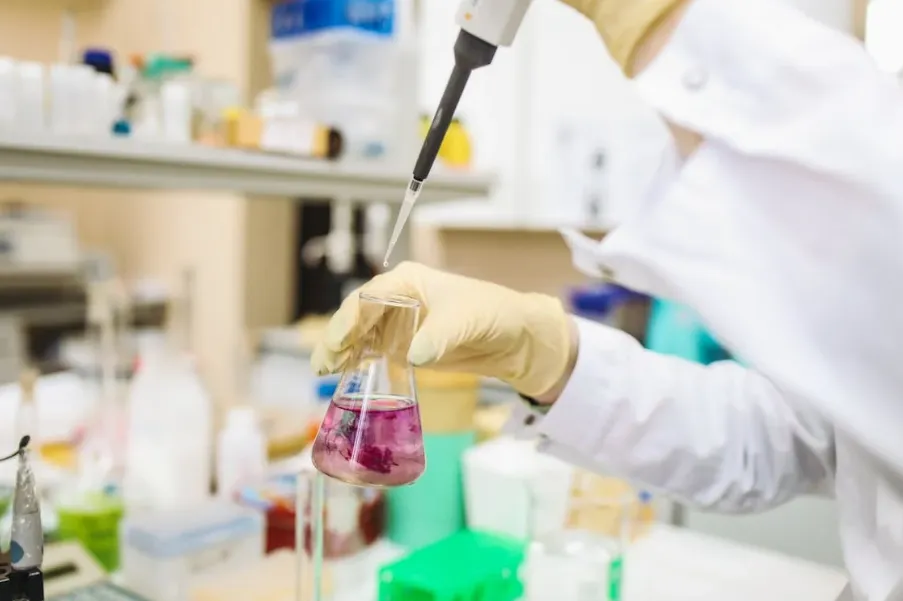Cancer is a global health crisis affecting millions of people worldwide. While genetics play a part, environmental factors, such as exposure to man-made chemicals, are increasingly seen as major contributors to the disease.
This article examines the rise in cancer rates, the impact of man-made chemicals, and the urgent need for action.
The Growing Prevalence of Cancer
The incidence of cancer has been steadily rising globally, reflecting a major public health concern. According to the WHO, 2022 saw an estimated 20 million new cancer cases and 9.7 million cancer-related deaths. With about 1 in 5 people expected to develop cancer during their lifetime, the impact of the disease is profound. Cancer affects approximately 1 in 9 men and 1 in 12 women who succumb to it.
Exposure to man-made chemicals, such as industrial pollutants, pesticides, and additives in consumer products, has been linked to various types of cancer.
These chemicals can cause cellular damage, disrupt hormonal systems, and promote carcinogenesis. The rise in cancer cases is partly attributed to such environmental exposures, which are becoming more common due to industrialization and urbanization.
The Role of Man-Made Chemicals
People encounter man-made chemicals from multiple sources, including air, water, food, and consumer products. Pesticides and industrial pollutants can taint the environment, resulting in exposure. For instance, agricultural pesticides may leave residues in food, while household items and industrial emissions contribute to air pollution.
Certain man-made chemicals can cause cancer through various mechanisms, such as inducing genetic mutations, disrupting hormonal systems, and promoting chronic inflammation. These carcinogenic properties result from the chemical’s ability to alter cellular processes and damage DNA, which may lead to uncontrolled cell growth and cancer.
The concept of cumulative exposure is particularly concerning. Over time, repeated or prolonged exposure to low levels of carcinogenic chemicals can accumulate, increasing the overall risk of developing cancer.
According to Palm Beach Daily News, experts emphasize that the pervasive use of nonbiodegradable chemicals and pesticides has far-reaching negative effects. Dr. Bruce Lanphear highlighted that while reducing exposure is possible, complete elimination is nearly impossible.
U.S. regulatory delays and skepticism about chemical safety further complicate the issue, underscoring the need for more effective measures to protect public health.
Specific Chemicals of Concern
Among the most concerning chemicals are:
I. PFAS (Per- and Polyfluoroalkyl Substances)
“Forever chemicals,” or PFAS, are increasingly recognized as a threat to public health due to their widespread use and persistence in the environment. These chemicals are found in numerous products, such as firefighting foams, nonstick cookware, and water-repellent clothing.
Exposure to PFAS has been linked to various health issues, including firefighting foam cancer. Studies have shown that firefighters frequently exposed to PFAS-containing firefighting foams have a higher risk of developing certain types of cancer. These include testicular cancer, kidney cancer, and prostate cancer.
TorHoerman Law notes that the persistence of PFAS in the environment is another major concern. These chemicals do not break down readily, leading to their accumulation in soil, water sources, and human tissues.
Is AFFF foam still used today?
Yes, AFFF (Aqueous Film-Forming Foam) is still used today, primarily for firefighting in industries and airports. However, its use is increasingly restricted due to environmental and health concerns over PFAS chemicals, leading to a push for safer, fluorine-free alternatives.
II. BPA (Bisphenol A)
BPA is a widely used chemical found in a variety of plastic products, including food containers, baby bottles, and thermal receipts. Concerns about BPA’s safety have arisen due to its potential to leach into food and beverages, exposing individuals to this endocrine disruptor.
According to ScienceDirect, some research has suggested that BPA may promote the growth of hormone-dependent tumors. For example, studies have linked BPA to the proliferation and metastasis of breast and ovarian cancer cells.
How to remove BPA from the body?
To reduce BPA levels, avoid consuming foods from cans or plastic containers, switch to glass or stainless steel, and choose BPA-free products. Eating a diet rich in fiber and staying hydrated can also help, as fiber aids in the excretion of toxins.
III. Glyphosate
A widely used herbicide, Glyphosate, found in products like Roundup, has sparked considerable debate regarding its safety. As a key ingredient in many weed killers, glyphosate is prevalent in agriculture and landscaping. However, the controversy surrounding its health effects, particularly its potential link to cancer, remains intense.
Numerous studies have examined glyphosate’s safety, with some research suggesting a connection between exposure and cancer.
According to NBC News, a Pennsylvania man was awarded $2.25 billion by a jury. He claimed that Bayer’s Roundup weed killer caused his non-Hodgkin’s lymphoma. The jury found that Monsanto, the company that owned Roundup, had engaged in misconduct and recklessly disregarded human safety.
This verdict sends a strong message to the corporation and highlights the growing concerns about the potential health risks associated with glyphosate. The case highlights the debate over glyphosate’s safety and underscores the need for thorough safety evaluations and corporate accountability for harmful chemicals.
